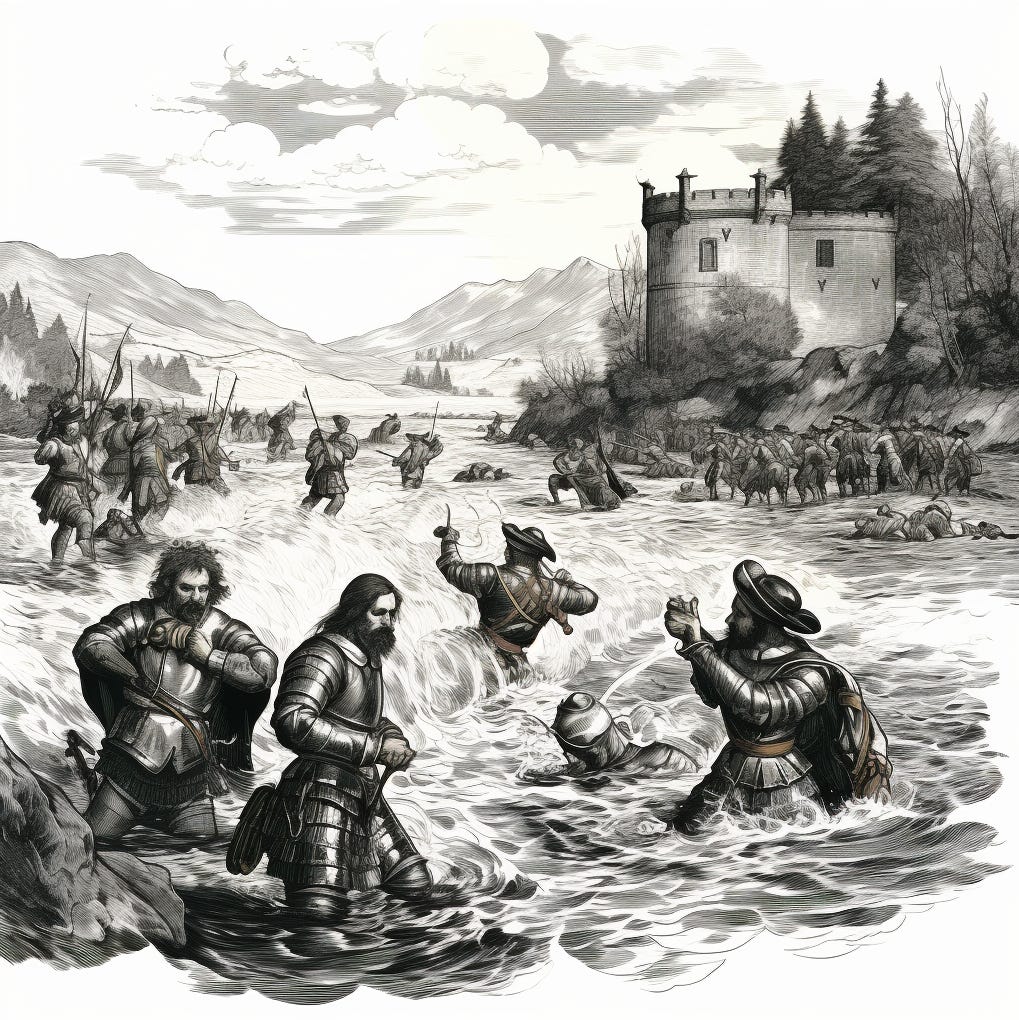The Drowning of Clan Arthur by Clan Campbell
The history of Scotland is filled with tales of clashing clans, fierce rivalries, and tragic conflicts. One such poignant chapter in Scottish history revolves around the ill-fated feud between Clan Campbell and Clan Arthur, a feud that culminated in the infamous "drowning of Clan Arthur." This event, though not as widely known as some other clan conflicts, represents a dark and haunting period in Scotland's history.
In this blog post, we will delve deep into the origins of the conflict between Clan Campbell and Clan Arthur, the events that transpired, and the lasting impact it had on the people involved. Through the retelling of this tragic story, we aim to shed light on the turbulent world of medieval Scotland and the consequences of bitter clan rivalries.
Read the new article from our daily premium feed : The Centuries-Old Feud Between Clan Campbell and Clan Sinclair
The Roots of Conflict
To understand the conflict between Clan Campbell and Clan Arthur, one must first grasp the intricate dynamics of Scottish clans during the medieval period. Clans were not just extended families but complex socio-political entities with their own lands, loyalties, and rivalries. Competition for power, territory, and resources was common.
The Campbells, a powerful Highland Scottish clan, had their origins in the ancient Britons of Strathclyde. Their influence grew steadily over time, eventually making them one of the most dominant clans in Scotland, especially in Argyll. They were staunch supporters of the Scottish Crown and had strong connections with the Stewarts and the Bruces.
On the other hand, Clan Arthur was a smaller clan, with a notable presence around Loch Awe. The MacArthurs, a family of the Clan Arthur, held a position of significance in the region.
The origins of the conflict between the Campbells and the Arthurs can be traced back to land disputes, competition for resources, and the desire for dominance in the region. As the Campbells expanded their influence, tensions with neighboring clans, including the Arthurs, began to rise.
The Drowning of Clan Arthur
The conflict between Clan Campbell and Clan Arthur reached its peak in 1567 when a skirmish took a tragic turn. Duncan MacArthur and his son, members of the Loch Awe MacArthur family, were confronted by the Campbells during a dispute. In the ensuing confrontation, the MacArthurs found themselves outnumbered and cornered.
Desperation and fear drove the MacArthurs to seek refuge in Loch Awe, their ancestral waters. The Campbells, however, were relentless in their pursuit, and the MacArthurs were ultimately forced into the loch, where they met a tragic fate.
The drowning of Clan Arthur sent shockwaves through the Scottish Highlands. It is said that a charter dated 1567 confirms that a pardon was granted to the Campbells of Inverawe for what became known as the "drowning of Clan Arthur." The tragic event left an indelible mark on the history of the region and fueled existing tensions between clans.
The Broader Implications
The drowning of Clan Arthur did not occur in isolation. It was a part of a broader pattern of clan conflicts that characterized medieval Scotland. The tragedy intensified the animosity between the Campbells and their rivals and added to the complexity of clan relations in the region.
The drowning of Clan Arthur raises important ethical and legal questions. Were the Campbells justified in their actions, or did they overstep the bounds of acceptable conflict? The incident reveals the blurred lines between self-defense, vendetta, and cruelty in the world of Scottish clans.
The drowning of Clan Arthur is a haunting chapter in Scottish history that has left a lasting legacy. The memory of this event has been preserved in the annals of Scottish history and serves as a reminder of the brutal nature of clan rivalries during that era. The tragedy also contributes to the enduring enmity between certain clans.
Lessons from History
The tragic story of Clan Arthur's drowning provides insight into the challenges of conflict resolution in clan-based societies. The complexities of clan loyalties, grievances, and vendettas often made peaceful settlements difficult to achieve. Understanding these dynamics is essential for a nuanced view of historical events.
History, especially one as rich and complex as that of Scottish clans, shapes the present and the future. The events of the past, like the drowning of Clan Arthur, continue to influence the identities and relationships of modern clans and their descendants.
The drowning of Clan Arthur remains a somber chapter in the history of Scottish clans, shedding light on the tumultuous and sometimes tragic nature of clan rivalries during medieval times. It also highlights the enduring importance of history in shaping contemporary identities and relationships in Scotland. As we look back on this dark episode, we can gain a deeper understanding of the complexities of clan societies and the lessons they offer for conflict resolution and reconciliation in the present day.





